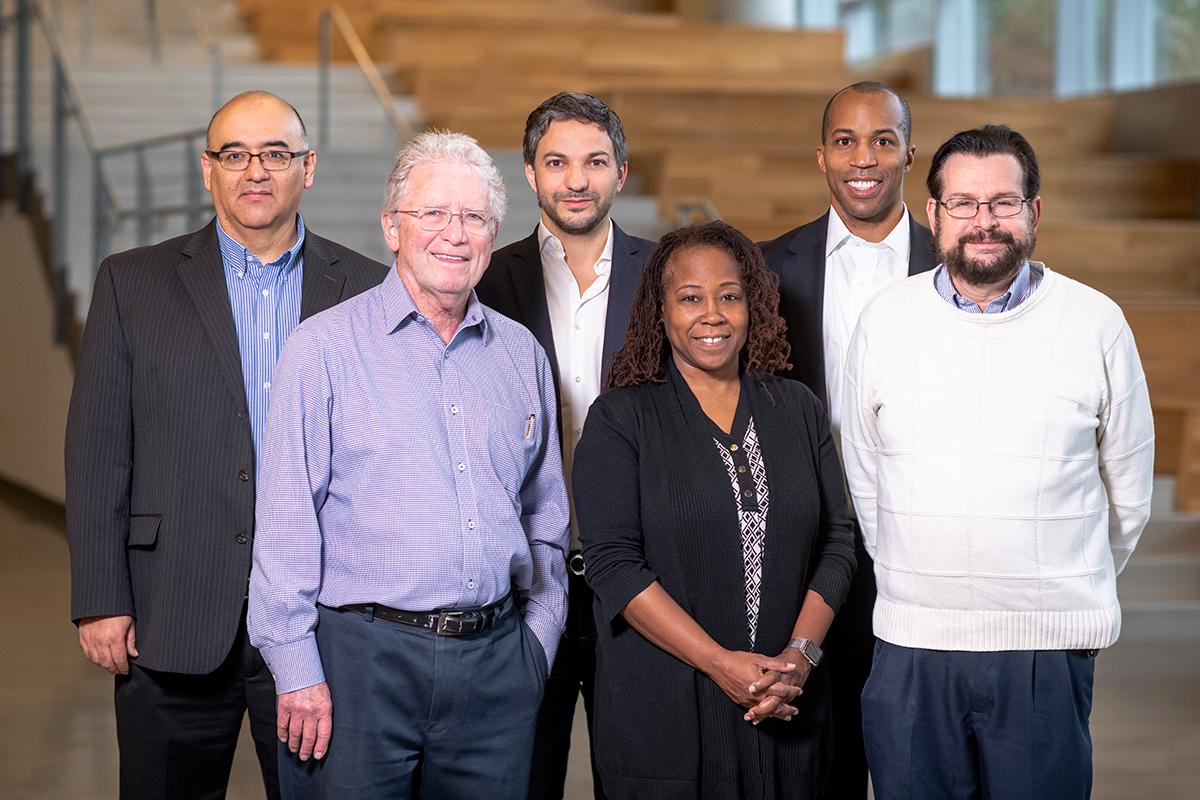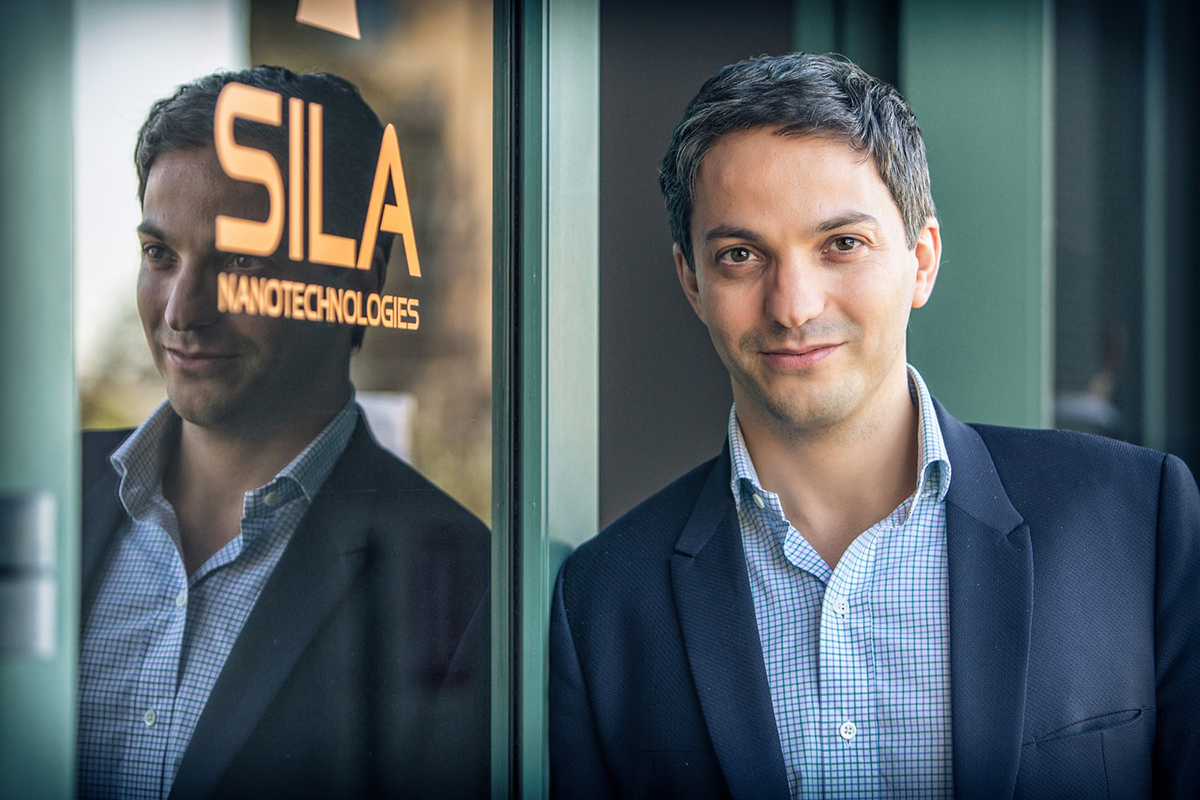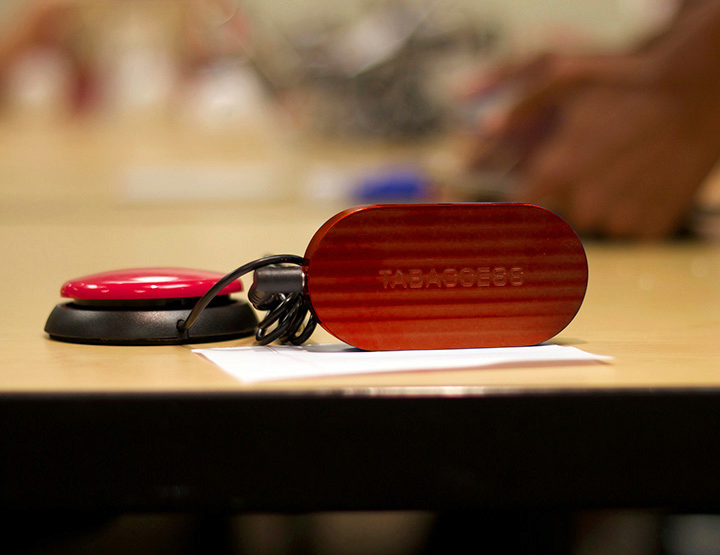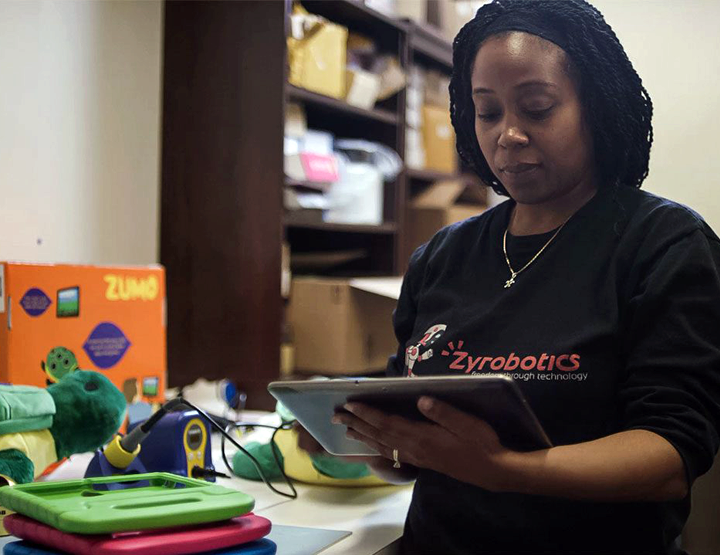For engineering faculty, moving a discovery from the lab to the world is a journey into the unexpected

They could have chosen to publish a paper about their research and forge ahead with their explorations, satisfied with adding knowledge to their field. Or they could have filed the patent and licensed the technology, allowing an established industry player to bring their work to the world. Either approach would have benefited humankind. But these six Georgia Tech faculty did something else: They started their own companies.
This is not a casual thing. While the realm of research is complex, it’s also familiar; the entrepreneurial journey, however, is an endeavor generally made with little or no expertise. You have to take new kinds of risks, confront alternative ways of thinking, and open yourself up to an assortment of challenges, obstacles and setbacks.
But it can bring reward beyond money. When a Northrup Grumman rocket was launched into space last fall, it carried thermal tape invented by Baratunde Cola and marketed by his startup, Carbice. “NASA live-streamed a video of the launch, and our whole company was watching it,” says Cola, an associate professor of mechanical engineering and materials science. “We’re now in space, circling the world!”
The buzzword for bringing a university technology to market is commercialization, but the purest definition of the word — “managing or running something principally for financial gain” — somehow seems ill-suited to people in academia. So many are motivated simply by seeing their work make a real and lasting impact on others. Besides, they don’t always quit their day jobs. There are classes to teach, research to do, committees to serve. Company work often takes place in the off hours.
This doesn’t feel like a lab...
Lessons in the differences between academia and private enterprise are learned quickly. “In the academic world, it’s OK if there’s a high chance something won’t work,” says Gleb Yushin, a professor of materials science engineering and CTO of Sila Nanotechnologies, a startup he co-founded. “But when you work for a company, you can’t move the needle on one thing at the expense of something else. Everything must perform well and be reproducible.”
“The Ph.D.s we have in our company are all brilliant, but we needed to shift from research to actually building a product,” says Santiago Grijalva, a professor of electrical and computer engineering and founder of the startup ProsumerGrid. “That was not trivial because you’ve got to build something that’s bulletproof. Looking back, I think I took for granted that this shift in thinking would just happen.”
At the start of 2019, Grijalva found himself straddling the worlds of academia and business more than most. ProsumerGrid offers a software platform that helps electric utilities better simulate and plan power distribution — which has become much more complex in the era of onsite electricity generation through solar and other sources. Most of Grijalva’s time is now spent on the research side, rather than on the company: He and his team are winding down the U.S. Department of Energy-funded research project that shaped the platform.
“It takes some years to develop a highly specialized system like ours,” Grijalva says, while clarifying that the company is very much up and running. “We have a working product, as well as customers. Beginning this year, we’ll be working to broaden the marketing effort.”

“It takes much longer than you expect and yet, we still feel like we’re at the beginning of our story.”
Are we there yet?
Indeed, the time it takes for a product to reach the market comes as another surprise to some faculty. Prior to starting Sila, Yushin and colleagues discovered a potential way to accommodate the swelling of silicon anodes inside batteries. This discovery pointed to a new way of getting rechargeable batteries to last longer.
And after eight years, $100 million in investment and 30,000-plus iterations to develop a nanocomposite anode material, those batteries are now becoming a reality. Early this year, a manufacturer of wearable electronics will begin rolling out new products containing batteries made with Sila’s materials.
“It takes much longer than you expect,” Yushin says, “and yet, we still feel like we’re at the beginning of our story. We’ll continue to expand in consumer electronics, and ultimately we’ll be in electric and autonomous vehicles.”
While Sila had enormous success with investment, communicating to investors was a tall hurdle. Improved battery technology is a Holy Grail, and its search is a global race, so the startup fared phenomenally well in early investment rounds. “But for Round B, we had to visit lots of investors, and we kept hearing no, no, no, no,” Yushin says. “Some investors would struggle to understand our business category. Others would just point to battery companies that have failed.”
Baratunde Cola of Carbice can relate. “The biggest thing is to get investors to understand the business model, because they mostly trust you on the science,” he says. “Materials-based companies like ours have a completely different business model and growth trajectory.”
The thermal material engineered at Carbice dissipates heat inside electronics, but with higher reliability in all environments — like outer space — and at a much lower assembly cost. Thus, a company choosing Carbice is committing to making its products a little differently for several years to come. That stickiness, Cola says, is the essence of the business model.
“One of the biggest mistakes I made in articulating Carbice early on was to show investors all these customers we had in our database,” Cola says. “And we were doing some sort of business with about 100 companies. But that wore us out. People who really understand this know that it works best when it’s optimized in the system the customer has. And that takes a partnership, not a transaction.”
Right this way — er, that way
Even to some impressive inventions, the market sometimes says “no thank you.” But one closed door often opens another. That’s when a startup makes the infamous “pivot.”
Steven Danyluk, professor emeritus of mechanical engineering, remembers the day he began to pivot his startup, Polaritek. The company had refined a way to optically measure stress in materials used to make semiconductors and solar cells. While Danyluk and colleagues were at a product showcase, staffing their booth, a group of three men walked by, stopped, looked. They found Polaritek’s technology intriguing.
“They asked us, ‘Could this technique measure stress in plastic?’ And I told them yes, and actually, measuring plastics is a lot easier than measuring silicon,” Danyluk recalls. “It turns out, they were from a soft drink company, and they were interested because of their bottling operations.”
Now, 90 percent of Polaritek’s business is in the beverage industry. Companies are pursuing lighter weight bottles of all shapes and sizes, but they need to be sure the plastic can perfectly withstand pressure changes and high stacking in storage. By the end of 2018, Polaritek was poised to partially pivot again by developing machinery that allows manufacturers to do their own lightning-fast assessment of individual bottles.


At Tech, it’s not just engineers that are taking the startup path. With cross-discipline collaboration, faculty members like Jeffrey Skolnick in the College of Sciences has capitalized on artificial intelligence (AI) and drug development for his startup, PanXome. Skolnick’s AI platform can look across 97 percent of human proteins and predict how they will interact with each other. The resulting knowledge speeds the evaluation of drug compounds in their earliest stages of development.
Originally, PanXome was going to help drugmakers do just that, on a fee-for-service model. But Skolnick quickly realized he’d need to make a pivot, similar to Polaritek. “The sales cycle for that is really long, and the number of sales we would need to succeed was just too high,” says Skolnick, a Georgia Research Alliance Eminent Scholar. “It became clear to us that we had to pivot.” The priority now, he says, is to use the technology in concert with the company’s own wet labs to develop new drugs.
That’s not to say that PanXome won’t support molecule screening and evaluation for research organizations and pharma companies. But Skolnick is clear that the plan is to plant the flag in drug development, beginning with identifying new kinds of antibiotics.
The same can be said for Zyrobotics; its pivot was more of a brand extension. Now a well-entrenched young company started by Ayanna Howard, a professor of electrical and computer engineering, Zyrobotics makes a device called TabAccess. Using Bluetooth technology, the device allows children with disabilities to use a tablet computer without having to swipe or stretch the screen.
If you go to the Zyrobotics website, you’ll find TabAccess for sale — but you’ll see it listed alongside a robot, some immersive books and a series of STEM e-learning modules. One new technology led to others and, ultimately, a wider focus: helping children with special needs learn. “These children are often struggling in school because the world is not accessible to them,” Howard says. “We’re trying to level the field.”
The ultimate test
While Zyrobotics products now work in harmony with each other, Howard acknowledges the big trial ahead: selling them. “Our apps have been downloaded a half-million times, so that’s a success,” she says, “but if I were to start again, we would focus more on developing a concrete sales strategy before implementing marketing initiatives.”
“Developing a sales channel is the hardest part for a startup,” says Kurt Jacobus (’93), who has seen the entrepreneurial landscape as both a company founder (MedShape) and as managing director of a VC enterprise (GRA Venture Fund). “When you get into sales, you’re talking about the vagaries of human behavior. Most startup founders are technically oriented people. They believe people recognize superior products and buy them. But in most cases, people don’t recognize superior products. And to try them, there’s always some mental hurdle they need to get over.”
It’s impossible to say which of the startups launched by College of Engineering faculty will make those sales and go on to become wildly successful companies. What is clear is that the founders are not just building better mousetraps. They’re venturing into territories of paradigm shifts and new problems, ready to solve.
For a national economy built on innovation — and a planet growing in complexity — that’s good news.